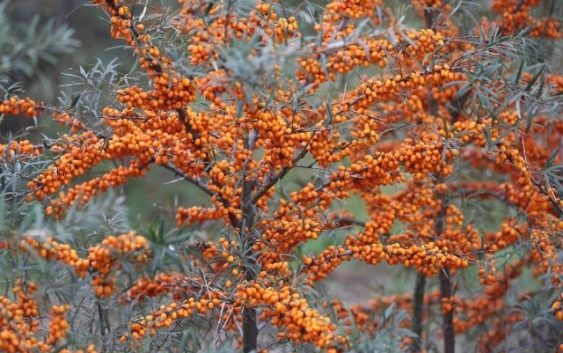We understand the trees and shrubs of the family with the funny name "Suckers", with which you encounter more often, than you think.
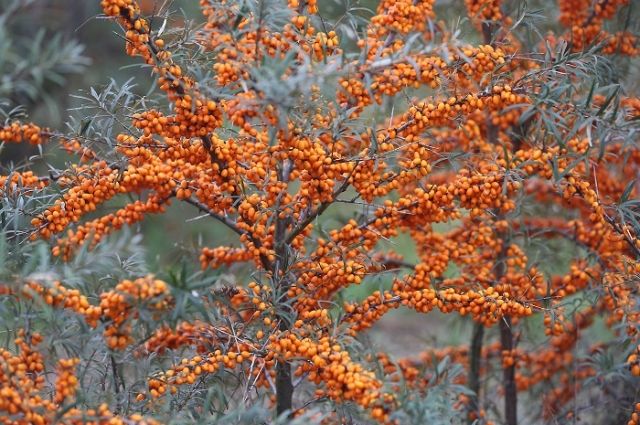
For many of our fellow citizens, a slang word «goof» has the only meaning: a simpleton and, Consequently, loser. But people, interested in cultivated plants, know, what the fuckers — is a botanical genus of trees and shrubs, which, in turn, belongs to the loch family (Elaeagnaceae). But the most curious, that some representatives of this «family» familiar even to those, who can't tell an apple tree from a pear.
sisters
The most recognizable representative of the Lokhovs — they stuck (Hippophae rhamnoides). Its savory and healing berries are especially highly valued by supporters of a healthy diet., and seed oil is considered a bit of a remedy for all diseases. Sea buckthorn can be found in many suburban areas. And here is her close relative sheferdia silver (Silver Shepherd) know mostly masters. And you can see it as soon as possible in the botanical, than in private gardens. The situation is unfair, because shepherdia berries — also a storehouse of vitamins. For example, in terms of vitamin C content, they even surpass sea buckthorn. At home, in North America, shepherdia is called a bison berry and is widely used in cooking. And in Russia it was introduced into culture I. AT. Michurin. Considering that, that Shepherdia winters well and bears fruit even in St. Petersburg and its districts, and at the same time can be used as an ornamental shrub, gardeners should pay attention to it.
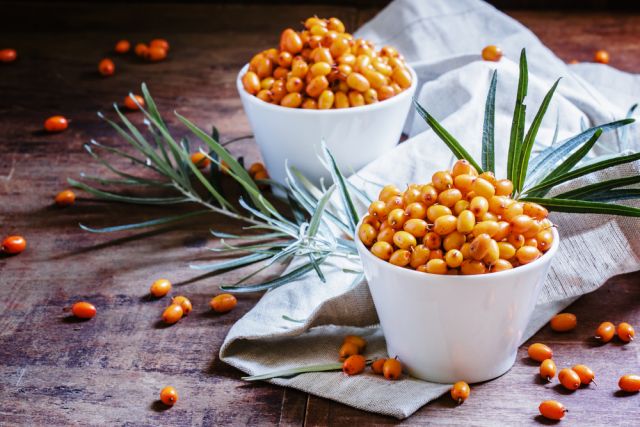
Orange magic. What is the value of sea buckthorn?
Brothers
In the genus of suckers, there are practically 50 species. They are well known to people since very ancient times., mainly — in Central and East Asia. Despite the fact that among the suckers there are many evergreens, which do not winter in the middle zone of Russia, some representatives of the genus have successfully adapted to our climate and grow well in gardens.
Better than other summer residents, the silver goof is familiar (Elaeagnus silver). This shrub is widely distributed in ornamental gardening.: its beautiful silvery leaves retain their color from the moment of blooming until leaf fall. Its flowers are small and inconspicuous., but they exude a wonderful aroma, which floats in the garden like a cloud, felt at a considerable distance. Its close relative is the narrow-leaved sucker (E. angustifolia) differs from it in form, leaf color (they are not silver on top., and greenish gray) and spiky shoots. Its flowers also have a pleasant strong smell., and the appearance allows the use of shrubs in decorative garden compositions. Despite the fact that in the Caucasus and Central Asia, where does this species grow in nature, he is very sorry, gardeners in Central Russia and more northern regions are not yet familiar with it so well, as it should. Even less known sucker umbrella (E. umbrellata), which is otherwise called akigumi. In the middle lane he, chagrin, not very stable and freezes in severe winters, but it boasts original leaves with a wavy edge, changing color twice: immediately after dissolution they are silvery, turn green in summer, and in the fall they get a light yellow color.
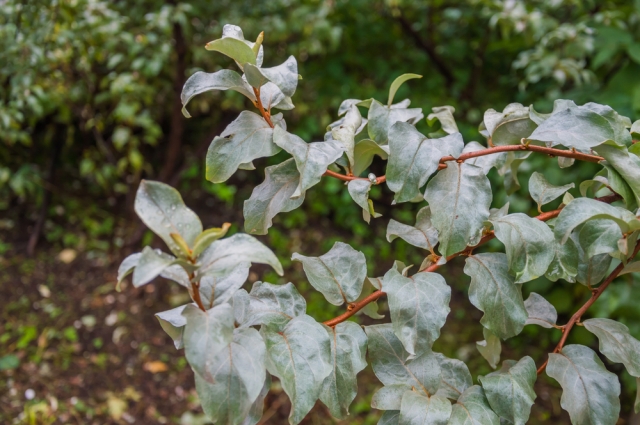
Goof silver (Elaeagnus silver). A photo: Shutterstock.com
Fundamentally, that the fruits of all these suckers are not only edible, but also useful. They can be eaten raw. Truth, their flesh is sweet, but dry and chewy, because not everyone likes it. Also, all kinds of preparations and even flour for baking sweets are made from berries., thanks to which they do not stale for a long time.
Another representative of suckers is heard by many, despite the fact that he acquired his fame under the name gumi. Its botanical name — goof multiflorous (E. multiflora). On a par with sea buckthorn, this native of the Far East has earned the fame of a healer, able to keep people strong and youthful. In a certain sense it is, since gumi berries contain a lot of amino acids (for example, asparagine, proline, lysine), some of which are irreplaceable, that is, it is not synthesized in the human body. Its fruits have a very pleasant refreshing sweet and sour taste., vaguely similar to the taste of persimmon. They are used as a tonic.. In addition, they are very useful in cardiovascular and gastrointestinal diseases. Gumi can be fully grown in the middle lane. But he is planted like this, so as not to block the root neck, and for the winter, branches are pinned to the ground and covered with non-woven material.
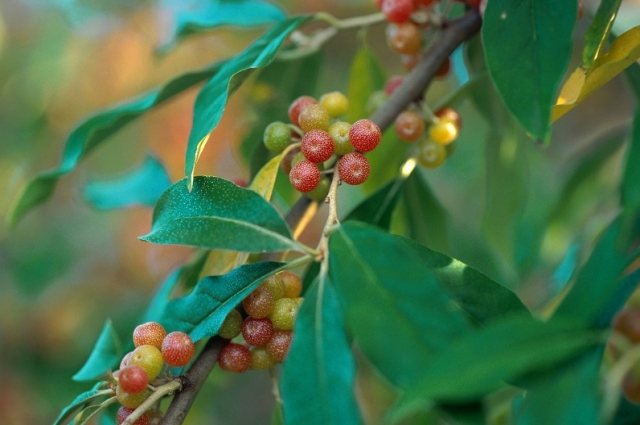
Tires. A photo: www.globallookpress.com
A source: aif.ru

